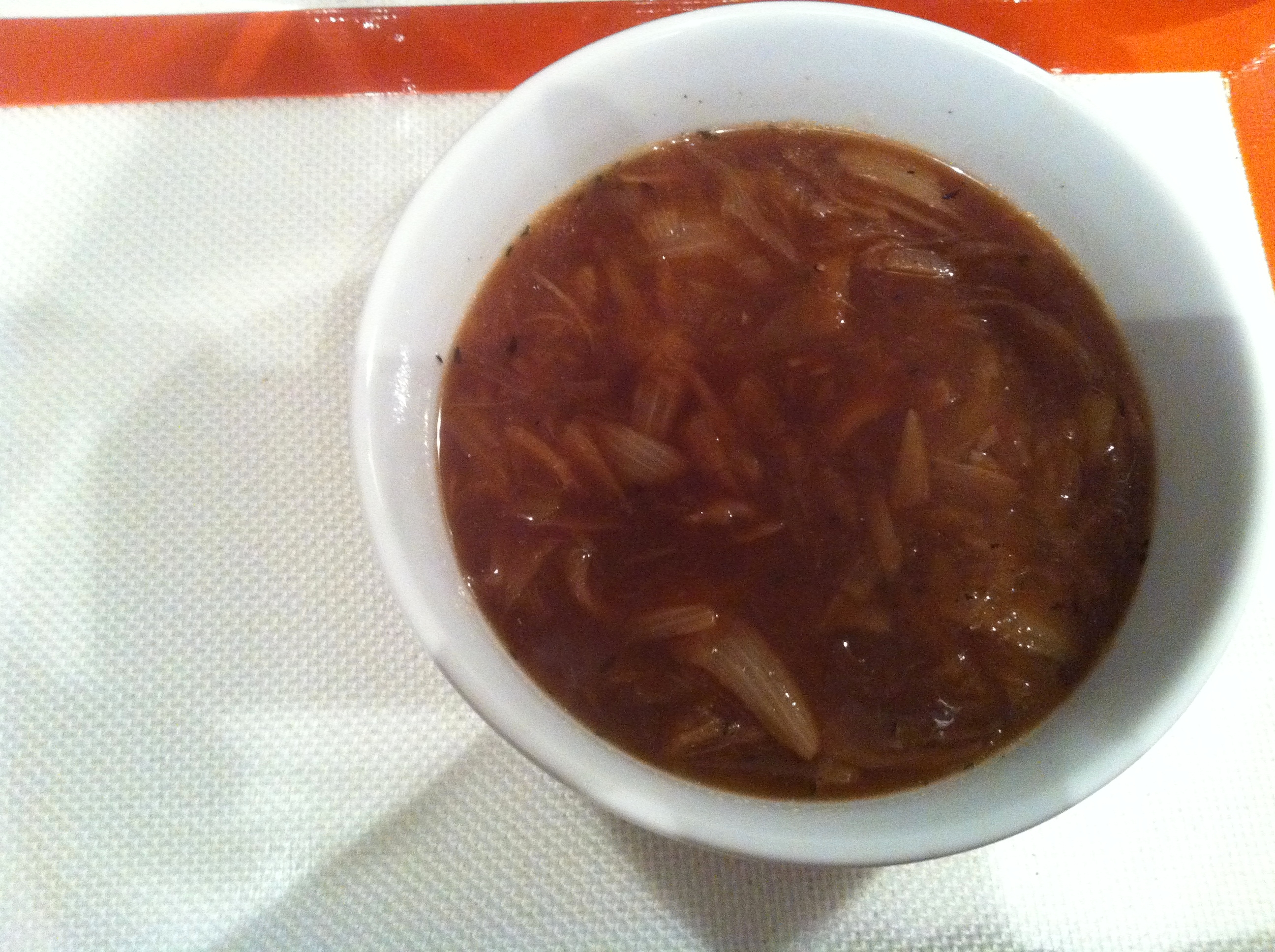If I call the soup I've been making nearly weekly for the past few months French onion soup, I'm probably lying a little bit. What most people call French onion soup is mostly a thing of the past for me.

But this soup is very similar. I grew out of the big croutons and the melted cheese, and I felt the need that my recipe, well method really, had to step up to the intensity those ingredients gave in other ways. Part of that was using onions with more intense flavors than Vidalia. Yet even without the sweet white onions, this soup ends up sweeter - and denser and more filling.

But I think my favorite thing about this soup is that I can tell you exactly how to make it without any measuring cups or spoons. It takes a lot of time, but it's also really easy. Don't let its requiring caramelizing onions scare you.
French onion soup redux: simple onion soup
Ingredients:
- Olive oil, enough to coat the pot you're using and another dash
- A combination of red, yellow, and white onions - but not Vidalia for this soup as they're too sweet - enough to fill the pot
- A handful of shallots (I usually use three)
- Kosher salt
- A heavy dash of brown sugar
- A splash of red wine
- Beef stock, enough to almost fill the pan once the onions are caramelized
- A bay leaf or two
- Thyme
- Fresh ground black pepper
Preparation:
- Coat your pot with olive oil. (I prefer to use a 3.5 quart dutch oven that happens to be shaped like a pumpkin.) I recommend drizzling it over the bottom of the pan and spreading it around with a paper towel: you'll waste some, but you won't risk over coating and thus making it harder to caramelize the onions.
- Slice the red, yellow, and white onions thinly - about a quarter of an inch wide at the thickest layer - from stem to root. Dice the shallots. Repeat until you have thrown enough into your pot that it's exactly full without trying to stuff it.
- Drizzle just a dash of olive oil over the onions. Add a dash of kosher salt to the pot. Toss the onions lightly in the oil and salt.
- Cover the pot and place it over medium high heat. This is to sweat the onions. Not everyone caramelizes onions this way (it does take more time), but I always do because it retains the strong onion flavor within the sweet flavors from caramelization. Turn the heat down to medium when all the onions are translucent and there's an inch of so liquid at the bottom of the pot. You'll want to peek and stir the bottom onions towards the top to prevent burning instead of sweating.
- Remove the lid. Add a heavy dash of brown sugar, not too much for taste, but to help caramelize the onions; you don't need all too much. Cook over medium heat, stirring occasionally, until lightly brown and reduced by more than half - that is caramelized. This is the long and grueling stage, about an hour or two depending on how big a pot and how high your medium heat is. You want to make sure that they don't burn as you cook them by stirring every ten minutes or so, more towards the end. You know that you can move to the next step when continuing to cook the onions will cause them to burn. There should be some onion sweat still in the bottom of the pot, just very thickened, and the onions will be a deep golden brown. Let some of them burn a little and get some nice smokey flavors stuck to the bottom of the pot.
- Throw a dash of red wine into the pot to deglaze, that is to help scrape the burnings off the bottom of the pot and mix in with the onions. Don't throw in more than a dash of red wine to deglaze because we'll deglaze further with beef stock and we don't want this to be as strong a flavor as in "normal" French onion soup.
- Add a few dashes of beef stock to the pot, stir, and scrape the bottom of the pot more to make sure that all the burns are back into the soup. After, add enough beef stock that the pot is almost filled but you can still stir it - I fill it until there's about an inch of the pot above the soup.
- Turn the heat back up to medium high to high heat. Add the bay leaf or two, a few pinches of thyme, and a few grinds worth of black pepper. Cook to reduce for about thirty minutes or until reduced by about a quarter. I really like the flavors that bay leaf imparts, so I leave it in that whole time; you might want to pull it sooner.
- Season to taste with additional kosher salt and black pepper. But keep the salt light or you'll lose this soup's sweetness. Cook for another 5 minutes to combine, let cool a few minutes (otherwise, it will burn your tongue), then serve. It goes better with fresh bread than toast or cheese.
This makes about 4 servings when I make it in my 3.5 quart Dutch oven.